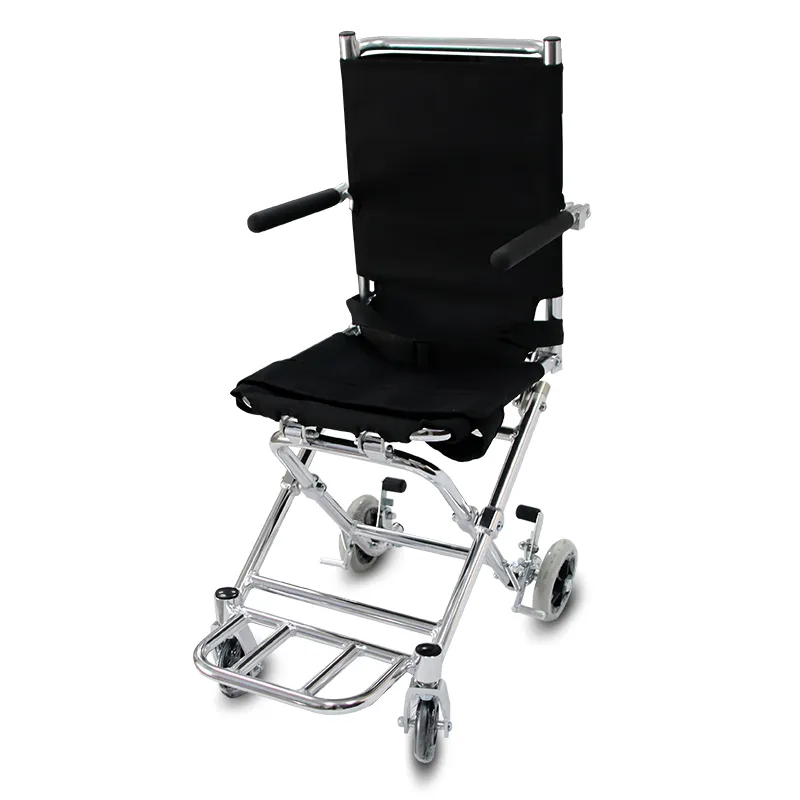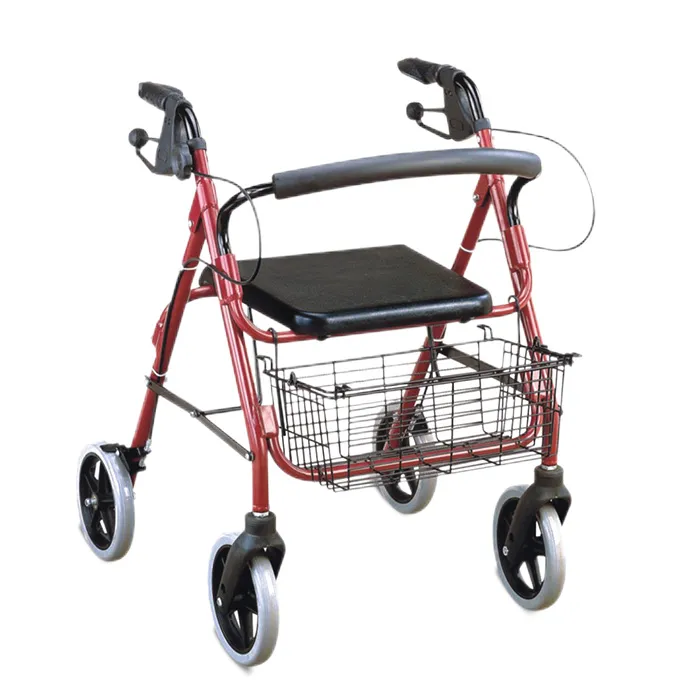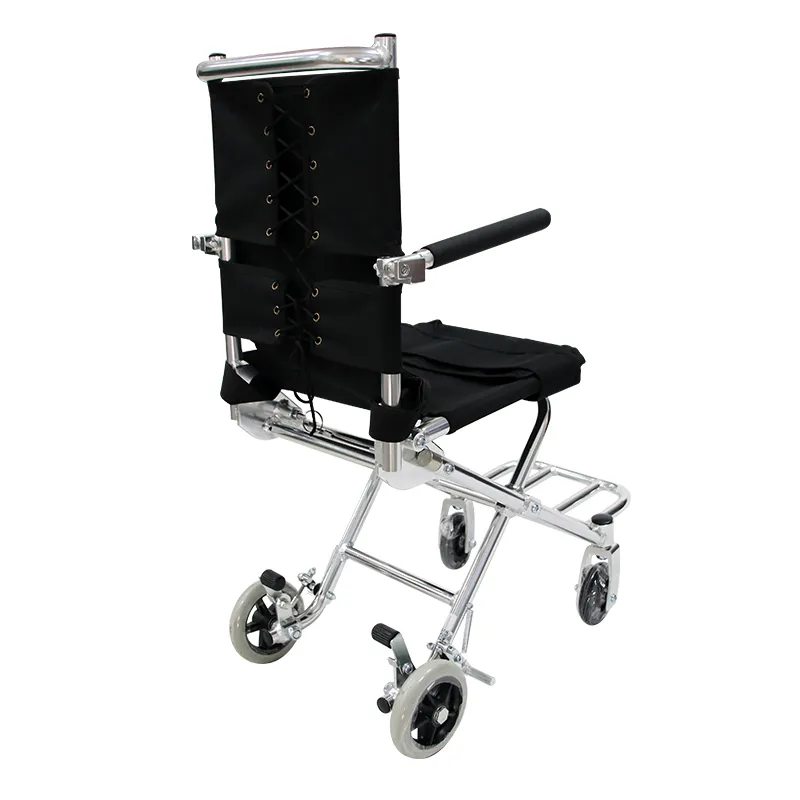With the increasing diversity of rehabilitation assistive devices, the rollator walker with seat is popular because it combines walking assistance and temporary rest functions. However, in actual use, many users frequently ask a question: Can a rollator walker with seat be used as a transport wheelchair? This question seems simple, but it is actually related to the structural design, safety standards, clinical positioning and use boundaries of the equipment.
This report will focus on this core issue and deeply analyze the essential differences between the rollator walker with seat and the transport wheelchair in terms of design concept, functional application, load-bearing structure, control method, clinical recommendations and other aspects, and clearly point out the technical and safety reasons why the two cannot be interchangeable.

What is a rollator walker with seat?
——Rollator walker with seat: walking assistance as the main function, seat as the auxiliary function
The rollator walker with seat is a device for individuals with limited walking function but still with a certain degree of autonomous walking ability. It mainly helps users maintain balance and reduce the risk of falling through four-wheel stable support and front handlebars. Most rollator walkers with seats are equipped with a foldable or fixed seat in the middle of the vehicle body to facilitate users to take a temporary rest during walking.
Its core features are as follows:
·Supports the user to actively walk;
·The seat is designed for short-term rest;
·The user mainly pushes himself, and there is no pushing function at all;
·No structural support designed for long-term movement of people.
What is a transport wheelchair?
——Transport wheelchair: mainly for walking and moving, assisting others to push
The transport wheelchair is a means of transportation designed for people with mobility impairment. Unlike the rollator walker with seat, the transport wheelchair does not rely on the user's active walking at all, but is pushed by caregivers or family members to achieve movement.
Its core features are as follows:
·Supports long-term sitting;
·Equipped with a push handle and a brake system;
·The rear wheel is small and relies on others to push;
·There is a clear ergonomic riding design.
From the perspective of functional positioning, the rollator walker with seat emphasizes "autonomy + short-term rest", while the transport wheelchair emphasizes "dependence + long-term riding". The two have clear positioning and cannot be used interchangeably.
Structural design: factors that determine the functional differences between the two
Although both have seats and wheels, from the perspective of structural design, there are core differences between rollator walker with seat and transport wheelchairs that cannot be ignored.
1. Support structure design
The structure of rollator walker with seat is mainly "forward push stability + upper body support". The frame is mainly made of light aluminum alloy or composite plastic. The strength of the whole vehicle is enough to support the user to use force in a standing state, but it is not suitable for bearing the continuous pressure of the entire body weight on the seat surface.
Transport wheelchairs use stronger steel frames or high-strength aluminum alloy structures. The design load-bearing capacity is generally more than 100kg. The seat, backrest, armrests, pedals, and wheels are all tailored for continuous riding and movement.
Therefore, from a structural perspective, rollator walker with seat does not have a long-term load-bearing design and cannot be used as a transport wheelchair.
2. Seat comfort and ergonomics
Rollator walker with seat mostly uses narrow, backless seats, usually less than 35 cm wide, and the material is thin, which is not suitable for riding for more than 15 minutes.
The transport wheelchair has a complete ergonomic seat design, including thick cushions, adjustable backrests, armrests, and footrests. The ride time can reach several hours, which meets the needs of medical care.
The starting points of the seat design are completely different. The seat of the walker is "temporary" and the transport wheelchair is "functional". They cannot replace each other.
3. Mobile control method
The rollator walker with seat has no rear push handle or push brake. Its core design is that the user walks with the support of the front handle, not for others to push.
The transport wheelchair is equipped with a long handle and rear wheel brake, and the design allows the caregiver to control the direction and speed.
Trying to push people with a rollator walker with seat is not only extremely inconvenient, but also has no brake device. It is very easy to slip on slopes and slippery roads, posing a serious safety hazard.

Safety analysis: What risks will the misuse of the rollator walker with seat bring?
Considering the use of the rollator walker with seat as a transport wheelchair is extremely undesirable in clinical care and rehabilitation scenarios. It is mainly reflected in the following aspects:
1. Overload leads to frame fracture
Rollator walker with seat is generally designed to bear less than 80kg (including the weight application point). Long-term use of it to push the human body will not only increase the wear of the wheels, but also cause fatigue fracture of the main frame and accidental rollover.
2. Steering and braking out of control
Rollator walkers with seats that lack a rear braking system cannot cope with steep slopes, downhill or slippery surfaces. The reason why transport wheelchairs are safe is that their rear wheels have a double-sided braking system and allow steady control. However, it is difficult to exert effective control on rollator walkers with seats when going downhill, and it is very easy to slip or hit.
3. Unable to bind the user's body
Transport wheelchairs are usually equipped with seat belts, footrests and side armrests to effectively fix the user's sitting posture and prevent slipping. Rollator walkers with seats do not have these devices at all. If there is a slight bump or turn during the push, it may cause the passenger to roll over or fall.
Differences in usage scenarios: user type determines the choice of equipment
Analyzing the applicable population and usage scenarios of the two types of assistive devices will help further clarify why the two cannot be used interchangeably.
1. Rollator walker with seat users
·Middle-aged and elderly people who walk slowly but still have the ability to move independently;
·People with mild balance disorders (such as those in the recovery period of a mild stroke);
·People who need to take a temporary break after walking for a long time;
·Short-term assistance in scenarios such as outdoor walking and supermarket shopping.
These users use rollators with seats mainly to enhance their confidence and maintain their active mobility.
2. Transport wheelchair users
·People with severe lower limb dysfunction (such as paraplegia and hemiplegia);
·Old disabled people;
·Postoperative patients who are temporarily unable to walk;
·Nursing objects who have no independent mobility.
Transport wheelchair users are completely unable or rarely active in walking, and are highly dependent on alternative means of transportation, requiring complete safety and comfort guarantees.
Standard and regulatory support: standardized classification and clear use
Many countries’ medical device management regulations clearly classify rollators and wheelchairs, and each has corresponding product standards and registration and certification paths.
1. Different classifications of medical devices
· Rollator walker with seat is generally a low-risk device (Class II);
· Transport wheelchairs are mostly classified as devices with a higher regulatory level (Class III or Class II) due to the requirements of long-term sitting and body fixation.
2. Technical standards do not overlap
· ISO 11199 standard specifies the structural requirements of rollators;
· ISO 7176 series specifies detailed technical indicators such as load, comfort, and brake system for wheelchairs.
It can be seen that the two have established clear boundaries in design, testing, and listing standards, and there is no basis for any cross-use.

The rollator walker with seat must never be used to transport a wheelchair
The following is a summary table of core comparisons:
Project | Rollator with seat | Transport wheelchair |
| Design goal | Walking assistance + short rest | Long-term sitting + others pushing |
| Seat structure | No backrest, narrow seat, non-ergonomic | Backrest, wide seat, ergonomic |
| Pushing method | User pushes by himself | Caregiver pushes from behind |
| Safety device | No brakes, no safety belt, no footrest | Complete braking system, safety belt, footrest |
| Load-bearing structure | Short-term weight support when standing | Supports long-term sitting, strong stability |
| User group | Can walk but need assistance | Those who cannot walk and are completely dependent on wheelchairs |
| Can it be mixed? | No | No |
Why Choose Yikang Medical as Your OEM Wheelchair Supplier in China?
Since 2014, Yikang Medical has been a trusted OEM factory for major global wheelchair brands. With advanced facilities and experienced staff, we produce customized wheelchairs and hospital beds that meet diverse international standards. Buyers can enjoy factory-direct prices, bulk discounts, and fast delivery. Our OEM services are ideal for companies looking to launch or expand their medical equipment lines with support from a certified and reputable Chinese manufacturer.

